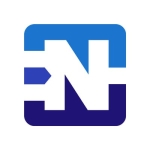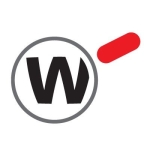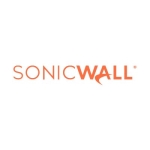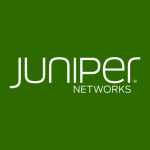
Solution Architect at Techbridge Distribution
Centralized management and rich features improve security posture
Pros and Cons
- "As far as I have seen, Check Point NGFW is very stable."
- "Check Point NGFW should concentrate more on the SMB market, as solutions in this space are not as strong in security."
What is our primary use case?
We are working with Check Point NGFW as an internet firewall, a data center firewall, and a core firewall. We also deal with customers using the Maestro firewall for data centers.
What is most valuable?
One of the main advantages I have seen with Check Point NGFW is centralized management. The number of vulnerabilities is very few compared to commodity products, so customers don't have to worry even if it is exposed to the internet. Specific features include threat prevention, threat cloud, Infinity Portal for centralized cloud management, URL filtering, content awareness blade, identity awareness blade, and VPN blades. Customers only need to subscribe to what they require, so resources are free for other uses.
What needs improvement?
Check Point NGFW should concentrate more on the SMB market, as solutions in this space are not as strong in security. In terms of SD-WAN technology, Check Point's offerings are not as mature as competitors. There are some issues during initial setup, particularly with establishing connectivity with the Infinity Portal.
For how long have I used the solution?
I have been working with Check Point NGFW for one year.
Buyer's Guide
Check Point NGFW
June 2025
Learn what your peers think about Check Point NGFW. Get advice and tips from experienced pros sharing their opinions. Updated: June 2025.
860,592 professionals have used our research since 2012.
What was my experience with deployment of the solution?
During initial setup, deployment teams usually face issues establishing the initial connectivity with the Infinity Portal.
What do I think about the stability of the solution?
As far as I have seen, Check Point NGFW is very stable. I have worked with Check Point products for 15 years and haven't found any stability or performance issues.
What do I think about the scalability of the solution?
Check Point NGFW is very scalable. They offer multiple solutions from SMBs to enterprise data centers, making it an easily scalable solution with no issues in scalability.
How are customer service and support?
We have escalated issues to Check Point technical support multiple times and have received timely and very good responses, especially from the local support team available in our country.
How would you rate customer service and support?
Positive
Which solution did I use previously and why did I switch?
I have worked with almost all the major products: Fortinet, Palo Alto, Cisco ASA, and FTD.
How was the initial setup?
There can be issues during the initial setup, particularly with establishing connectivity with the Infinity Portal.
What about the implementation team?
I am currently in presales and not directly involved in deployment, but I have been part of a deployment team before.
What's my experience with pricing, setup cost, and licensing?
Compared to other solutions, the pricing of Check Point NGFW is high. However, for customers particularly concerned with security, such as in enterprises, data centers, financial sectors, or government sectors, the pricing is justified. If a customer is not highly focused on security, a less expensive firewall may suffice.
Which other solutions did I evaluate?
I have experience with major vendors such as Fortinet, Palo Alto, Cisco ASA, and FTD.
What other advice do I have?
I would recommend Check Point NGFW due to their long history of providing secure solutions and their pioneering stateful inspection technology. Their threat cloud is one of the richest AI clouds available. They also offer strong R&D, which results in fewer vulnerabilities in their products. Overall, I rate Check Point NGFW an eight out of ten.
Which deployment model are you using for this solution?
On-premises
Disclosure: My company has a business relationship with this vendor other than being a customer. Reseller
Last updated: Mar 12, 2025
Flag as inappropriateSolutions Architect at NTT DATA
Unified security architecture enhances data protection and multi-layered security
Pros and Cons
- "Check Point NGFW's multi-layered security architecture enhances data protection strategies by unifying security management, which is crucial in environments with too many separate products."
- "The perception is that Check Point NGFW is expensive, especially when all software modules are included."
What is our primary use case?
We use Check Point NGFW for enterprise firewalling, VPN, data loss prevention (DLP), user authentication, and zero-trust connectivity. All the functions of Check Point NGFW are utilized.
What is most valuable?
The most valuable features in my experience include perimeter firewalling, cloud and mobile security, application control, URL filtering, DLP, threat prevention, intrusion protection, and safeguarding against malware, botnets, and zero-day attacks. Check Point NGFW's multi-layered security architecture enhances data protection strategies by unifying security management, which is crucial in environments with too many separate products. The application and identity-based inspection are critical for understanding the data packets within the network.
What needs improvement?
The primary area for improvement would be the configuration process. While Check Point NGFW is not inherently difficult to configure, it might be intimidating for newcomers. Other products, like FortiGate, are perceived as more intuitive because they are easier to configure from the start. This has led to a perception that may affect market share.
For how long have I used the solution?
I have been working with Check Point NGFW for many years, probably around ten years.
What do I think about the stability of the solution?
I have encountered stability issues primarily with VPN, which required a code upgrade. However, overall stability is high, and I rate it a nine out of ten.
What do I think about the scalability of the solution?
Check Point NGFW is quite scalable. I have used units that never exceeded their capacity. If specified correctly, even the smaller boxes offer high session and bandwidth rates, making the solution highly scalable, even up to telco-level requirements.
How are customer service and support?
My experience with Check Point's technical support has been positive, especially during setup processes. Even challenging issues like those with VPNs have been resolved efficiently with their help.
How would you rate customer service and support?
Positive
How was the initial setup?
The initial setup of Check Point NGFW can be daunting for new users, but once you understand it, the setup is straightforward. For me, it's an eight out of ten in terms of ease of the initial setup.
What's my experience with pricing, setup cost, and licensing?
The perception is that Check Point NGFW is expensive, especially when all software modules are included. For larger enterprises with comprehensive service requirements, it is reasonably priced. However, in the medium-sized business market, it can be seen as expensive, leading to switches to alternatives like Fortinet.
What other advice do I have?
I rate Check Point NGFW an eight out of ten. It's a solid solution, particularly for large enterprise businesses, especially in banking and government, where there is always a need to diversify between different products. The overall product rating I would give is an eight.
Which deployment model are you using for this solution?
On-premises
Disclosure: My company has a business relationship with this vendor other than being a customer. integrator
Last updated: Mar 13, 2025
Flag as inappropriateBuyer's Guide
Check Point NGFW
June 2025
Learn what your peers think about Check Point NGFW. Get advice and tips from experienced pros sharing their opinions. Updated: June 2025.
860,592 professionals have used our research since 2012.
Assosiate Vice President at Novac Technology Solutions
Real-time prevention is there to protect against zero-day malware
Pros and Cons
- "The CPU-based emulation is a better feature than any technologies not having that."
- "The drawback is that I want to push the policy from my management console itself instead of on the Check Point device."
What is our primary use case?
I use it for UTM [Unified Threat Management]. I use a gateway firewall at the office.
What is most valuable?
Next Generation Firewall, along with Threat Emulation and Threat Extraction, is what I use. Real-time prevention is there to protect against zero-day malware and Check Point Sandbox.
And then, the CPU-based emulation is a better feature than any technologies not having that. Check Point has a CPU-based emulation. Normally, Fortinet and others, they do it differently. But these people work on a technology called CPU-based emulation.
This CPU-based emulation is a unique CPU-level technology that catches malware before it has an opportunity to deploy or evade detection. They call it SandBlast. Check Point SandBlast Threat Emulation. That is a great feature, which they are using. It controls attempts to bypass OS security controls also. And then it avoids deep security.
I use our Check Point firewall for all the NATing of my applications. I use it for external traffic monitoring where my Internet links are connected, and I use it as a gateway.
What needs improvement?
The drawback is that I want to push the policy from my management console itself instead of on the Check Point device. For example, if I have two different firewalls, I want to push the policy to the gateway, and then it will take 10 to 20 minutes to roll back the policies. It should be applied faster.
For how long have I used the solution?
I have been using it for more than a year.
What do I think about the stability of the solution?
It is a stable product 99.4% of the time.
What do I think about the scalability of the solution?
Check Point NGFW has a feature where it can top two of the firewalls, and then we can integrate the performance.
It's a cluster kind of solution where they can integrate.
How are customer service and support?
For the firewall, the support is good.
How would you rate customer service and support?
Positive
Which solution did I use previously and why did I switch?
I also use CloudGuard Security Posture Management. I also used Fortinet.
The major difference, I feel, is the threat emulation. It's zero-day protection. The supply chain attack is very, very low compared to all firewall vendors.
For example, being parallel to Palo Alto Networks or FortiGate and NFT OS or Check Point, that supply chain attack was very, very low in our Check Point firewall. And then the maintenance was very, very low compared to all.
That is my takeaway. My one of my takeaways before proceeding with my procurement decision was that there are two things: one is the security point. Another one is performance. The last one is very, very important. That is for the supply chain attack because we need to concentrate more on other products also.
So I don't want to spend too much time on the maintenance part. So this supply chain attack was very, very less compared to other providers since we are using multiple firewalls. This particular firmware was very stable, and there was no need to update until unless it is necessary and shared by Check Point team. So my takeaway is that the supply chain attack was very less compared to all.
How was the initial setup?
If the person knows the technology and the basic functionalities of a firewall, they can integrate it very fast.
We took three days to deploy.
What about the implementation team?
Three people were involved: my IT security manager, myself, and one L3 engineer who deployed the product.
The architecture and functionalities are managed by me, and then the deployment is taken care of by our team members.
What's my experience with pricing, setup cost, and licensing?
Compared to Fortinet and Check Point, both are the same.
What other advice do I have?
Check Point is coming up withsome AI integration and some AI features. They are using threat emulation on the AI front, but they are also discussing the quantum processor, where they have integrated many new features.
Overall, I would rate it a nine out of ten.
Disclosure: My company does not have a business relationship with this vendor other than being a customer.
Network Administrator at POET, LLC
Efficiently manages large-scale firewall deployments and improves threat detection
Pros and Cons
- "I would rate the overall solution ten out of ten."
What is our primary use case?
We use Check Point NGFW for edge firewalls as well as internal segregation firewalls. It easily allows us to separate critical traffic from non-critical office traffic.
What is most valuable?
We use Check Point NGFW for edge firewalls as well as internal segregation firewalls. It easily allows us to separate critical traffic from non-critical office traffic. Check Point ThreatCloud is excellent. Their central management console makes managing hundreds of firewalls very easy, and their antivirus that's part of the ThreatCloud is very good. Since implementing it, we have noticed a lot less getting through that maybe other antivirus within firewalls had failed to catch.
What needs improvement?
Pricing is high, but it's worth it. That's the main one.
For how long have I used the solution?
I have been using Check Point NGFW for over ten years.
What do I think about the stability of the solution?
Check Point NGFW is stable.
What do I think about the scalability of the solution?
Check Point NGFW has excellent scalability.
How are customer service and support?
Customer support is excellent.
How would you rate customer service and support?
Positive
Which solution did I use previously and why did I switch?
We did previously use several solutions from SonicWall and other vendors, and Check Point was just a better overall solution for our environment.
What about the implementation team?
Make sure to get a good third-party consultant or something to assist you, as the learning curve is steep at first.
What was our ROI?
We have seen a good return on investment. However, I do not have any metrics I can easily share.
What's my experience with pricing, setup cost, and licensing?
All good. No issues.
Which other solutions did I evaluate?
We evaluated a few other companies. The main one, or the biggest competitor, was Palo Alto.
What other advice do I have?
Make sure, if you do not have any experience with Check Point, to get a good third-party consultant or something to assist, as the learning curve is steep at first, but well worth the end benefit. Reliability, customer support, and just overall excellence. I would rate the overall solution ten out of ten.
Which deployment model are you using for this solution?
On-premises
Disclosure: My company does not have a business relationship with this vendor other than being a customer.
Last updated: Apr 28, 2025
Flag as inappropriateSecurity and Compliance Architect at a manufacturing company with 1,001-5,000 employees
Filters internet access and controls applications
Pros and Cons
- "Sometimes, the firewall doesn't pick up on certain things. If an attacker is clever and uses a low-profile indicator, the firewall might flag an anomaly but not give enough information to decide if it's worth investigating. The threat intelligence component also has challenges. It doesn't always tie alerts to active campaigns or threat actor groups. We often have to do extra work and use other products to figure these out."
What is our primary use case?
The tool helps with VPN and connecting mobile devices. We also use it for identity security. It filters internet access and controls applications. The firewall has an intrusion prevention system and stops data loss.
What is most valuable?
Internet access and filtering are important, and data loss prevention is definitely key. The threat access builder is useful. Application control is also big for us. We use it to check and block application downloads, looking for malicious or rogue software. This feature is very helpful.
What needs improvement?
Sometimes, the firewall doesn't pick up on certain things. If an attacker is clever and uses a low-profile indicator, the firewall might flag an anomaly but not give enough information to decide if it's worth investigating. The threat intelligence component also has challenges. It doesn't always tie alerts to active campaigns or threat actor groups. We often have to do extra work and use other products to figure these out.
What do I think about the stability of the solution?
I rate the solution's stability a seven out of ten.
What do I think about the scalability of the solution?
I rate the tool's scalability an eight out of ten. My company has 2500 users.
How are customer service and support?
The tool's support was responsive in critical situations, but for non-critical issues, they sometimes dropped the ball or didn't get back quickly enough. We had to do a lot of follow-ups and escalations to our technical account manager.
How would you rate customer service and support?
Neutral
Which solution did I use previously and why did I switch?
Before choosing Check Point NGFW, we used Palo Alto Networks. We switched because of issues with Palo Alto. Their customer support wasn't very responsive. Some policies weren't working right, letting things through that should've been blocked. We compared different pricing options and features before deciding on Check Point NGFW. The main differences between Palo Alto and Check Point NGFW were mostly in how they worked for us. They both offer good next-gen firewalls, but we had some problems with Palo Alto. Sometimes it wouldn't notify us quickly when something got through. Its prevention wasn't always as strong as we wanted.
We felt Palo Alto's traffic inspection was only partial, not checking everything thoroughly. Check Point NGFW seemed to offer better inspection. Check Point NGFW also had better threat intel and application control. With Palo Alto, we couldn't see all our applications, only some of them. This caused shadow IT problems. Cost was also a factor in our decision.
How was the initial setup?
The initial setup of Check Point NGFW is relatively straightforward. It's similar to other firewalls I've used and not too complex. If you have all the prerequisites in place, it's fairly easy to set up. On a scale of one to ten, with ten being the easiest, I'd rate the setup process around seven or eight.
The deployment takes about a week. We had a deployment process that involved going through change management, getting approvals, notifying stakeholders like the infrastructure team, and deploying the solution.
We used a consultant for the deployment because we were dealing with other initiatives and it was a tight situation timing-wise, even though we could have done it in-house.
Aside from the consultant, we had two or three staff members involved in the deployment. Their job roles were mainly on the security side - security architects, engineers, and analysts. Their roles were fluid, so they could take on various tasks if they had the knowledge or interest. For maintaining the solution, the number of staff required depends on the scale of the deployment. In our setup, about two people were in charge as the main points of contact.
What was our ROI?
I saw definite operational impacts from using Check Point NGFW. It helped prevent breaches, data security issues, and security incidents. We constantly saw attempts being blocked and picked up by the firewall. This was an improvement over Palo Alto, where some things got through without being detected. With Check Point NGFW, we got a significant return on investment because it prevented a major incident from happening and escalating.
What's my experience with pricing, setup cost, and licensing?
I rate the solution's pricing an eight out of ten. It costs around 100,000-200,000 dollars per month. Besides standard licensing fees, we paid extra for enterprise-level premium support. There were also onboarding costs factored in. These additional costs made it more expensive overall. The total cost was around 100,000 dollars, which was challenging for our budget. Check Point was also pricey, not much different from Palo Alto Networks. However, we decided switching to Check Point was better because it offered more capabilities for a similar price.
What other advice do I have?
I rate the overall solution a seven out of ten.
Which deployment model are you using for this solution?
Hybrid Cloud
If public cloud, private cloud, or hybrid cloud, which cloud provider do you use?
Amazon Web Services (AWS)
Disclosure: My company does not have a business relationship with this vendor other than being a customer.
Tech Support Engineer at Sybyl
Centralized management and policy tools improve security operations and reduce breaches
Pros and Cons
- "Check Point NGFW has positively impacted my organization by providing a significant reduction in security breaches, along with improved visibility and granular control over our applications and users."
- "The first-time setup was difficult because when we looked at the documentation, I made a suggestion to get clearer guidance."
What is our primary use case?
My main use case for Check Point NGFW is as a way to serve as an internal firewall for most of our network security operations and remote access.
A specific example of how Check Point NGFW helps with operations and remote access in my organization is that we've seen improved security and protection. In addition to the security features of the firewall, we are integrating it for VPN use.
How has it helped my organization?
Check Point NGFW has positively impacted my organization by providing a significant reduction in security breaches, along with improved visibility and granular control over our applications and users. It has also improved network performance and stability.
An example of how having granular control has helped my team in a real situation is that we are looking at application traffic and blocking malicious content for improved network performance and stability. We can also optimize bandwidth utilization, and regarding reduced breaches, we've seen it detect threats before they actually happen to our internal network. About enhanced visibility, we are looking at the ability to identify and control applications for users.
What is most valuable?
The best features Check Point NGFW offers in my experience include the centralized management console, which stands out to me, and it has a variety of tools such as policy management.
The value of the centralized management console and policy management for me is that it offers insight into all our policies that we administer, along with all the devices that we use regarding Check Point in the organization. This saves time during administration and configuration, especially for new users and new policies.
It saves us quite a bit of time compared to the way we managed things before, as it takes about a minute or so to spin up policies and push them through the organization network. I appreciate that we can create a template which we can use for multiple deployments regarding policies, which saves a lot of time. I also appreciate the reporting feature which gives elaborate reports for events.
What needs improvement?
I believe Check Point NGFW can be improved by making its initial configuration and deployment easier in the future because the first-time setup is really hard.
The first-time setup was difficult because when we looked at the documentation, I made a suggestion to get clearer guidance.
For how long have I used the solution?
I've been using Check Point NGFW for about a year and a half now.
What was my experience with deployment of the solution?
My experience with the deployment process was that it's a bit complex for first-time users.
What do I think about the stability of the solution?
Check Point NGFW is stable for us, and we have experienced no crashes or downtime.
How are customer service and support?
The customer support is great, and I have had to reach out to them; issues are resolved in a timely manner.
I would rate the customer support an eight out of ten.
Which solution did I use previously and why did I switch?
Before using Check Point NGFW, we had Sophos Firewall, and we switched because we wanted to try something new, but also Check Point proved to provide more enhanced features and tools.
How was the initial setup?
Overall, the initial setup with Check Point NGFW is a bit complex.
The complexity of the configuration for first-time users arises from the guide and documentation, which, as I said earlier, is not straightforward. We received training later on, which enhanced our usage with the appliance.
What was our ROI?
We have seen a return on investment in terms of reduced incidents, as we've seen a reduction in security incidents.
Which other solutions did I evaluate?
Prior to choosing Check Point NGFW, we evaluated other options such as Huawei.
What other advice do I have?
My advice to others looking into using Check Point NGFW is that they would need to evaluate their organizational needs, especially network and security-wise, before making a decision on what option to purchase on the market regarding firewalls and security appliances.
My company has a business relationship with this vendor, as we are both a partner and a reseller.
I rate Check Point NGFW eight out of ten.
Which deployment model are you using for this solution?
On-premises
Disclosure: My company does not have a business relationship with this vendor other than being a customer.
Last updated: May 11, 2025
Flag as inappropriateNetwork Security Engineer at Binary Global Ltd
User security has been significantly improved with comprehensive network protection
Pros and Cons
- "On a scale of one to ten, I would rate Check Point NGFW a ten; it is excellent."
- "The pricing is a little bit high, so it should be considered from a customer aspect."
What is our primary use case?
We use Check Point NGFW for network security purposes, where we have configured VPN, site-to-site VPNs, and advanced threat prevention for protecting our network infrastructure.
We utilize Check Point NGFW for network security, implementing the firewall for different aspects, such as threat prevention for securing our network and using tunnels to connect our different branches to one another.
What is most valuable?
In my experience, Check Point NGFW offers some of the best features.
VPN is one of those standout features.
The best features of Check Point NGFW are the site-to-site VPN capability, the advanced feature of VPN configuration, threat prevention, and advanced URL filtering, having all the security features present in the next generation firewall.
Check Point NGFW improves our security positively. The security improvement has improved significantly by using Check Point NGFW.
What needs improvement?
The pricing is a little bit high, so it should be considered from a customer aspect.
For how long have I used the solution?
I have been using Check Point NGFW for almost one and a half years.
What do I think about the stability of the solution?
In my experience, Check Point NGFW is stable with no issues regarding reliability.
What do I think about the scalability of the solution?
Check Point NGFW has been easy to scale as our needs have grown.
How are customer service and support?
The customer support was good, and we just need to raise a ticket from the customer support portal where the device has been registered, and we received instant support from the technical engineer.
I would rate the customer support between nine to ten; the support was excellent.
How would you rate customer service and support?
Positive
Which solution did I use previously and why did I switch?
I did not use a different solution before Check Point NGFW.
How was the initial setup?
The initial setup with Check Point NGFW is a little bit complex for those who are new to it.
What was our ROI?
Check Point NGFW has definitely shown improvement in terms of time and money cost-wise.
What's my experience with pricing, setup cost, and licensing?
The pricing, setup cost, and licensing were straightforward, but the pricing is a little bit high compared to other vendors such as FortiGate and Sophos.
Which other solutions did I evaluate?
We considered FortiGate as one of the options before choosing Check Point NGFW.
What other advice do I have?
I advise others looking into using Check Point NGFW to understand their infrastructure, scenario, and needs, and then decide on scalability before choosing Check Point NGFW.
We are partners with Check Point, but we are not a customer in other business relationships. As a partner, we work with different vendors such as Sophos, FortiGate, Check Point NGFW, and ASA.
On a scale of one to ten, I would rate Check Point NGFW a ten; it is excellent.
Which deployment model are you using for this solution?
On-premises
If public cloud, private cloud, or hybrid cloud, which cloud provider do you use?
[Answer to 'If public cloud, private cloud, or hybrid cloud, which cloud provider do you use?' from the text]
Disclosure: My company has a business relationship with this vendor other than being a customer. Partner
Last updated: Jun 3, 2025
Flag as inappropriateSenior Cyber Security Engineer at a computer software company with 501-1,000 employees
Unified management streamlines hybrid cloud operations and boosts disaster recovery, while initial setup complexity poses challenges
Pros and Cons
- "We've tested failover scenarios, and they worked flawlessly."
- "Licensing can be a bit complicated."
What is our primary use case?
We were looking for a solution to simplify our hybrid cloud infrastructure. We wanted something that could manage both our on-premises and cloud environments seamlessly. Nutanix offered that unified management plane. We also needed to improve our disaster recovery capabilities.
How has it helped my organization?
It's been really good. It simplified our operations significantly. We're able to manage everything from a single pane of glass, which has been a huge time saver.
What is most valuable?
The Prism Central management console is excellent. It gives us a centralized view of our entire infrastructure. Also, the built-in disaster recovery capabilities have been essential. We've tested failover scenarios, and they worked flawlessly. It simplified our operations significantly. We're able to manage everything from a single pane of glass, which has been a huge time saver.
What needs improvement?
The initial setup was a little complex, but Nutanix support helped us through the process. Also, licensing can be a bit complicated.
For how long have I used the solution?
We've been using it for about two and a half years now.
How are customer service and support?
Nutanix support helped us through the process when the initial setup was complex.
How would you rate customer service and support?
Positive
How was the initial setup?
The initial setup was a little complex, but Nutanix support helped us through the process.
What's my experience with pricing, setup cost, and licensing?
Licensing can be a bit complicated.
What other advice do I have?
Absolutely. Especially for companies looking to simplify hybrid cloud management and improve disaster recovery.
Which deployment model are you using for this solution?
Hybrid Cloud
If public cloud, private cloud, or hybrid cloud, which cloud provider do you use?
Other
Disclosure: My company does not have a business relationship with this vendor other than being a customer.
Last updated: May 7, 2025
Flag as inappropriateBuyer's Guide
Download our free Check Point NGFW Report and get advice and tips from experienced pros
sharing their opinions.
Updated: June 2025
Popular Comparisons
Fortinet FortiGate
Netgate pfSense
OPNsense
Sophos XG
Cisco Secure Firewall
Palo Alto Networks NG Firewalls
Meraki MX
Azure Firewall
WatchGuard Firebox
SonicWall TZ
Sophos UTM
Juniper SRX Series Firewall
Sophos XGS
Fortinet FortiGate-VM
SonicWall NSa
Buyer's Guide
Download our free Check Point NGFW Report and get advice and tips from experienced pros
sharing their opinions.
Quick Links
Learn More: Questions:
- How does Check Point NGFW compare with Fortinet Fortigate?
- Is Palo Alto Networks NG Firewalls better than Check Point NGFW?
- Which would you recommend - Azure Firewall or Check Point NGFW?
- Is Check Point's software compatible with other products?
- What do you recommend for a corporate firewall implementation?
- Comparison of Barracuda F800, SonicWall 5600 and Fortinet
- Sophos XG 210 vs Fortigate FG 100E
- Which is the best network firewall for a small retailer?
- When evaluating Firewalls, what aspect do you think is the most important to look for?
- Cyberoam or Fortinet?















